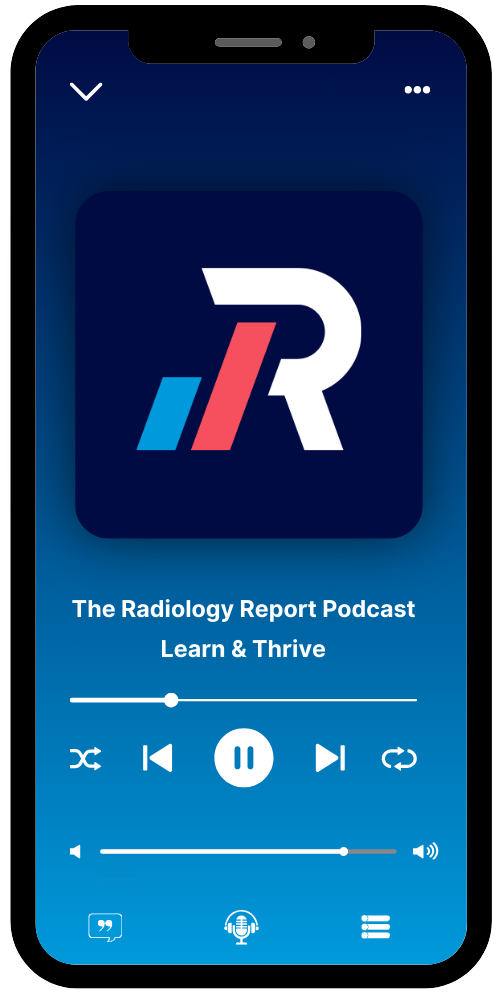In an episode of The Radiology Report Podcast, Improving the Radiologist Experience with Dr. Farzana Rahman & Dr. Amy Davis, Daniel Arnold sat down with Dr. Farzana Rahman and Dr. Amy Davis, founders of Hexarad, a radiology services platform designed to match the right scans with the right radiologists. Their insights into the intersection of technology and healthcare provide a fresh perspective on the challenges and opportunities in the radiology field.
Here are the top 3 takeaways from the conversation:
1. Tech + People: A Unique Approach to Growth
Hexarad’s founders, Dr. Farzana Rahman and Dr. Amy Davis, who are both radiologists, understand the intricacies of the profession and have designed the platform with radiologists in mind, ensuring a smooth user experience. They emphasize the importance of integrating technology with a people-focused approach, aiming to make radiologists feel valued and providing opportunities for them to contribute beyond just reporting scans. To achieve this, they offer incentives such as share schemes and regular social events.
While Hexarad is focused on providing radiology services, it is also a growing tech startup. Dr. Rahman and Dr. Davis discussed the challenge of balancing the operational complexities of radiology services with the development of scalable tech products, with significant investment going into systems that support their vision, particularly around workflow management and their unique scan-to-radiologist matching algorithm. The success of Hexarad also lies in its team, with Dr. Rahman and Dr. Davis emphasizing the importance of hiring the right people, including non-radiologists who bring essential skills. For example, Tim, their CTO, has leveraged his experience from delivery tech companies to shape Hexarad’s technology and scalability, ensuring the company can continue to grow and meet the demands of both its radiologists and clients.
“We're a tech company with people at its heart, so I think sure you have to build the right tech, you have to make it as slick as possible but also you have to make people feel valued and that you respect them and that they are part of your organization”
– Dr. Farzana Rahman
2. Flexible Work Model: The “Uber” for Radiologists
One of the standout features of Hexarad is its flexible work model. Much like the Uber model, radiologists can log in when they choose, offering a level of autonomy that’s popular with freelancers. This model also supports full-time and part-time radiologists who prefer more traditional benefits like sick leave and annual leave. Flexibility is key, and it's resonating with radiologists who appreciate the ability to choose their workload and sub-specialty preferences.
“The majority of our radiologists aren't employees; it's a bit like the Uber model. They're freelance and they tell us when they would like to report and how many scans they would like to do and their sub specialty and we provide the right amount of work and that flexibility is quite popular.”
– Dr. Farzana Rahman
3. Growing a Radiology Network: Recruitment is Key
In just 8-9 months, Hexarad was able to triple its network of radiologists, and a major factor behind this growth was their focus on recruitment. With four of the five founding team members being radiologists, they have a deep understanding of the challenges in recruiting, leading them to make sure the platform is both effective and user-friendly. Radiologists are also attracted by the opportunity to work from anywhere, with many joining Hexarad after leaving NHS roles or during retirement.
“We've tripled the amount of radiologists we have in the last 8-9 months and that's because we focused a lot on recruitment, being so the first thing to say is all four founders are radiologists and we also all report for Hexarad. So we have made sure that the system that we're using is really efficient and easy to use.”
– Dr. Farzana Rahman
Join the Conversation
To hear more from the founders of Hexarad, check out the full episode of The Radiology Report Podcast and make sure to subscribe for more thought-provoking discussions with leaders in radiology.




